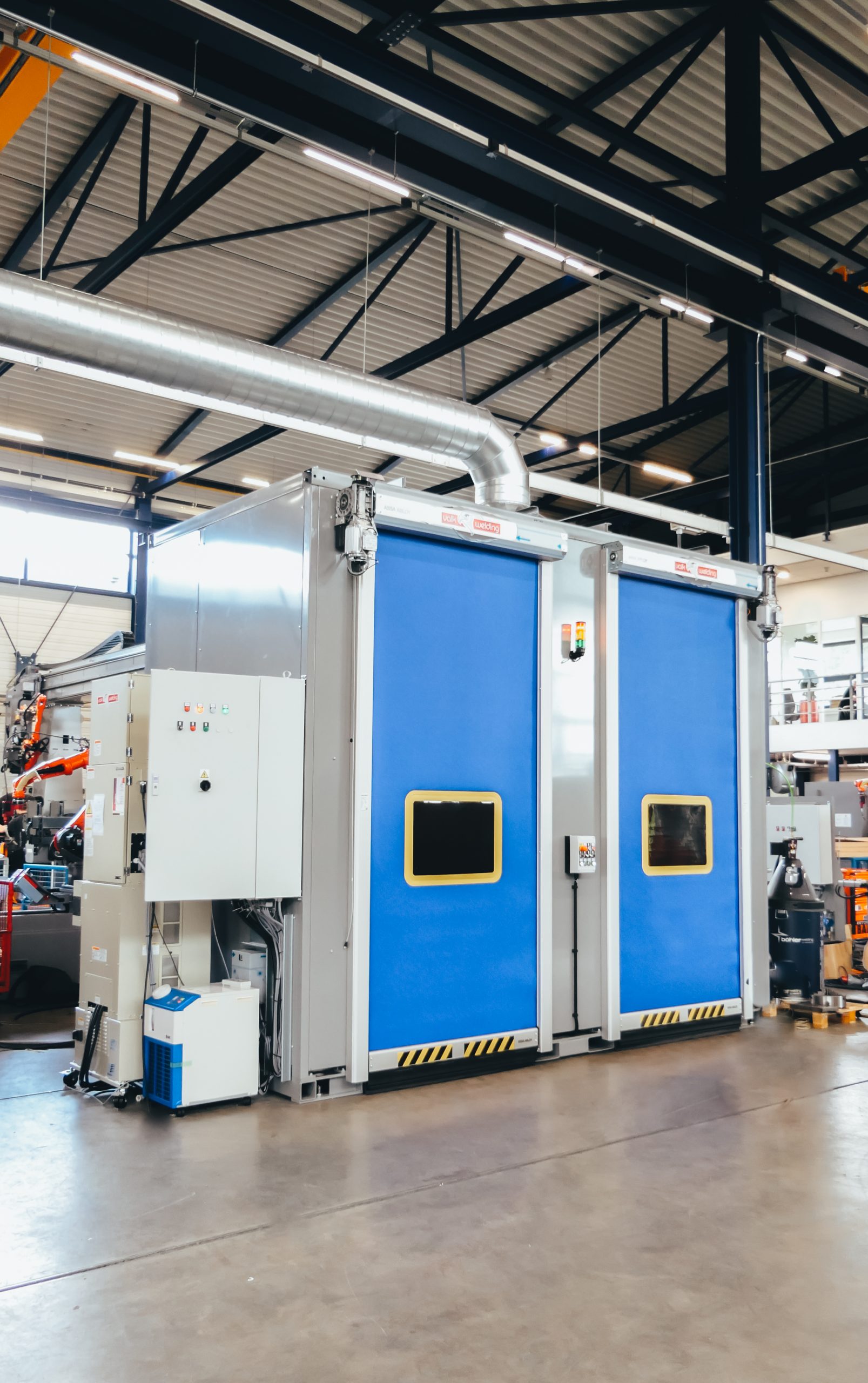
Vallourec France will produce components locally with Valk Welding 3D print cell and RAMLAB’s MaxQ system.
Valk Welding, in close cooperation with RAMLAB, delivered a 3D printing cell to the French group Vallourec. This group, with multiple production sites all over the world, wants to shorten the supply chain by producing industrial components on demand on site. The 3D print cell, based on WAAM technology (Wire Arc Additive Manufacturing), is the first cell of Valk Welding and RAMLAB that will be used on a commercial basis for industrial applications. The first cell has been taken into use as a pilot in Singapore. The ultimate goal is to be able to print industrial components on demand on all production sites in the world.
Among other things, Vallourec supplies tubular components for the oil and gas industry, such as connectors for connecting pipes of various types and diameters. All components are now produced in stock and shipped to the various locations worldwide. The entire route from the steel manufacturer to the oil and gas platforms takes 10 steps. “In the entire value chain, every link costs money and time. Moreover, there is a risk that products are not available from stock,” explains product owner Jonathan Moulin. “On-site printing offers the solution. The WAAM technology (Wire Arc Additive Manufacturing) has been extensively developed by RAMLAB, in collaboration with Valk Welding as a strategic partner.
Unique collaboration between RAMLAB and Valk Welding
RAMLAB is the first European Fieldlab that has proven to print bulky parts for industrial applications with WAAM technology, with the Damen tugboat’s certified propeller as the best known example. The first tests by RAMLAB for Vallourec resulted in the order for Valk Welding to build the 3D printing cell. RAMLAB’s managing director Vincent Wegener: “Our product, MaxQ, consists of a sensor suite and a software module that we have developed to guarantee maximum quality and thus achieve a certified printed part. The advanced monitor and control software monitors the process parameters in real time. In addition, the workflow of the CAD files from Autodesk PowerMill to a program for the Panasonic welding robot is now controlled at the touch of a button. The MaxQ system is fully integrated in the cell of Valk Welding. It is precisely in this cooperation that our strength lies and that makes us unique in Europe”.
Super Active Wire
Valk Welding has built a cell with 2 workstations, one with a fixed Siegmund table and a second with a fiveaxis manipulator. Both workstations are equipped for workpieces up to 2 m high, ø 800 mm and 500 kg product weight. In addition, the challenge for Valk Welding was to be able to increase the deposition rate without the risk of damaging the material. Therefore a Panasonic welding torch with an integrated servo motor was used which also supports the Super Active Wire process. With the SAW process, the welding wire makes up and down movements in a high frequency, so that with a limited heat input more material can be melted down per hour.
Proof of concept
Jonathan Moulin of Vallourec: “The advantage of WAAM technology is that you only need standard wire as a base material and no tools like in a machining process. Furthermore, we have saved the most common components for 3D printing and captured them in a digital warehouse from which all production sites worldwide can download the desired files.
For us, the biggest challenge now is to convince our customers in the oil and gas industry that we can deliver the desired quality. The customer only wants a certified product, regardless of whether it is printed or chipped. The 3D printed components meet the highest quality standards in the offshore industry. Convincing the customer of this will be a long road. That requires early adopters who want to participate in this innovation”.


